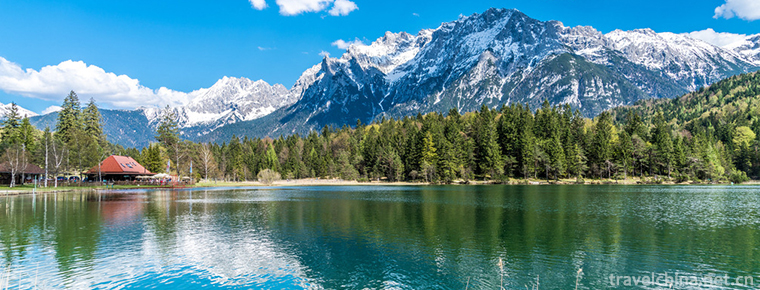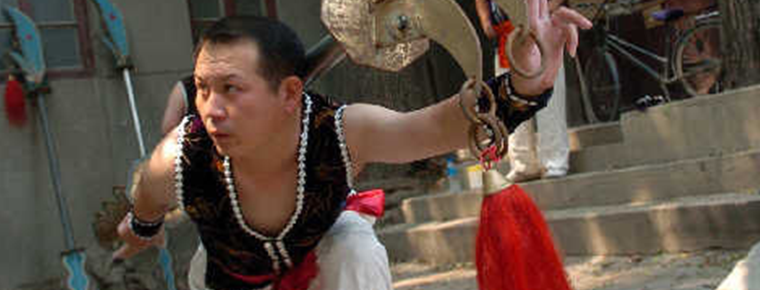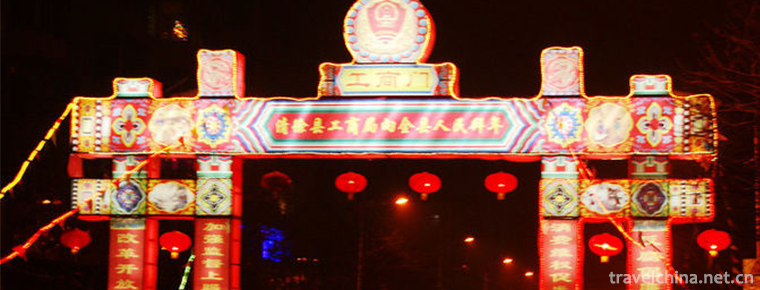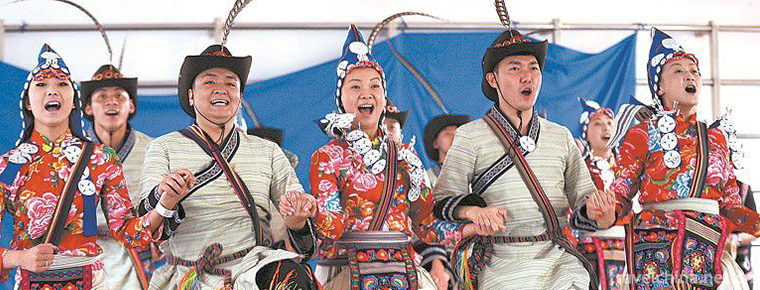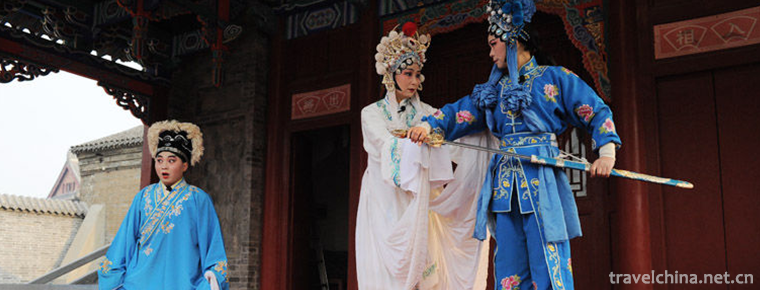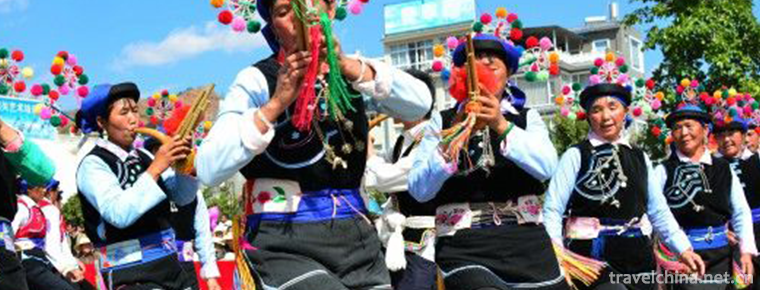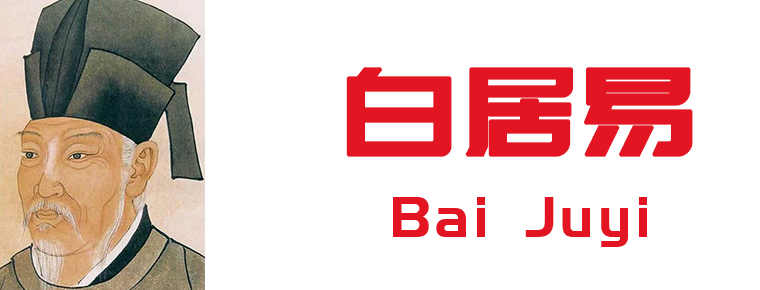Old boundary ridge of Funiu Mountain
Laojieling is located in the north of Xixia County, Nanyang City, Henan Province. It is located in the upper part of the south slope of Funiu Mountain. It is connected with Baotianman Nature Reserve in Neixiang in the East and west. It is 23 kilometers long, 16.7 kilometers wide and has a total area of 230,000 mu.
The whole landscape of Laojieling is composed of Zhongshan. The main peak is northwest-southeast, and the branches are feathery extending southward. The mountains are steep, ravines are vertical and horizontal, peaks and mountains are magnificent. Chicken Corner Tip, located in the northeast of Taiping Township, is the boundary mountain of Xixia, Luanchuan and Songxian counties. It is 2212.5 meters above sea level. It is the highest among the peaks. It is famous for its high peak and looks like a cock singing eastward. Qingri Mountain is blue-purple, clear and magnificent; clouds are shrouded in cloudy days, sometimes hidden and sometimes appeared, and its scenery is spectacular.
In 1982, Laojieling established a provincial nature reserve, and in 1998 it was upgraded to a national nature reserve, which is the largest nature reserve in Henan Province. In 2014, the Funiushan Laojieling Scenic Spot in Xixia was awarded the National 5A Tourist Scenic Spot, which is the only scenic spot on the list in Henan Province. In 2015, Xixia Laojieling was awarded "the most popular ten scenic spots" by Sina netizens.
Landforms
The landform of Laojieling Nature Reserve in Nanyang Xixia is composed of Zhongshan. The main peak moves northwest-southeast, and the branches extend southward in a pinnate shape. The mountains are steep, ravines are vertical and horizontal, peaks and mountains are magnificent. The highest elevation in the area is 2212.5 meters, and the lowest is more than 600 meters, with a relative height difference of more than 1600 meters. The main peaks are: Qijiaojiangjian, located in the northeast of Taiping Township. It is the boundary mountain of Xixia, Luanchuan and Songxian counties. It is 2212.5 meters above sea level. It is the highest among the peaks. It is famous for its high peak, which looks like a cock singing eastward. Qingri Mountain is blue-purple, clear and magnificent; clouds are shrouded in cloudy days, sometimes hidden and sometimes appeared, and its scenery is spectacular. Laojun Mountain, located in the northwest of Taiping Township, is about 50 kilometers away from Xixia County Town. It is the boundary mountain of Xixia and Luanchuan Counties. It is 2192.1 meters above sea level. The top of the mountain is Laojun Temple built in Tang Dynasty. According to Nanyang Fu Zhi of Jiajing in Ming Dynasty, "The cliff of Laojun Mountain's sudden peak hides a cloud surface, where Laozi learned from the world. There are relics of medicine stove and Dan stove, hence the name. "This mountain is a primitive forest area for tens of miles. Laojun Temple has been renovated, and there are many mountaineering tourists.
Resources
The Laojieling National Nature Reserve in Xixia is rich in animal and plant resources. The forest area of the reserve is 203.1 million mu, and the forest coverage rate is 83.3%. Natural forest area accounts for 92.9% of woodlands. There are about 2200 species of plants in total, of which more than 1600 species are vascular plants, belonging to 516 genera of 125 families, accounting for more than half of the plant species in Henan Province. As the national key protected plants, Lianxiang, Xiangguo, Eucommia ulmoides, Ginkgo, Walnut, Shuiqing, Coptis chinensis, Acer mongolica, Linchun and Fraxinus mandshurica are listed as the national key protected plants. There are 20 species of Gastrodia elata, wild soybean, green sandalwood, hazelnut, fir in Qinling Mountains, yew stem, geranium, toon, hedgehog and so on. The provincial protected objects are Taxus, Xinyi, Henan Mao grape, loquat, Panax notoginseng, Jinchai, Qiye Yihua, Fritillaria, Henan Quanye Ye, Henan Haitang and so on. There are 4 classes, 24 orders, 55 families and 182 species of terrestrial vertebrates, accounting for 8.6% of the animal species in China and 43.5% of the animal species in Henan Province. Among them, there are 30 species of mammals, 10 species of reptiles, 7 species of amphibians and 135 species of birds. The animals listed as national protection include leopard, mugwort, musk deer, antelope, Qingtou, golden carving, red belly pheasant, Mandarin duck, giant salamander, etc. The provincial protected animals include fox, ferret, dog, weasel, otter, leopard cat, woodpecker, owl, flying rat, etc. It is known as "the kingdom of natural animals and plants".
Laojieling is located in the north of Xixia County, Nanyang City, Henan Province. It is located in the upper part of the south slope of Funiu Mountain. It is connected with Baotianman Nature Reserve in Neixiang in the East and west. It is 23 kilometers long, 16.7 kilometers wide and has a total area of 230,000 mu.
The whole landscape of Laojieling is composed of Zhongshan. The main peak is northwest-southeast, and the branches are feathery extending southward. The mountains are steep, ravines are vertical and horizontal, peaks and mountains are magnificent. Chicken Corner Tip, located in the northeast of Taiping Township, is the boundary mountain of Xixia, Luanchuan and Songxian counties. It is 2212.5 meters above sea level. It is the highest among the peaks. It is famous for its high peak and looks like a cock singing eastward. Qingri Mountain is blue-purple, clear and magnificent; clouds are shrouded in cloudy days, sometimes hidden and sometimes appeared, and its scenery is spectacular.
In 1982, Laojieling established a provincial nature reserve, and in 1998 it was upgraded to a national nature reserve, which is the largest nature reserve in Henan Province. In 2014, the Funiushan Laojieling Scenic Spot in Xixia was awarded the National 5A Tourist Scenic Spot, which is the only scenic spot on the list in Henan Province. In 2015, Xixia Laojieling was awarded "the most popular ten scenic spots" by Sina netizens.
Landforms
The landform of Laojieling Nature Reserve in Nanyang Xixia is composed of Zhongshan. The main peak moves northwest-southeast, and the branches extend southward in a pinnate shape. The mountains are steep, ravines are vertical and horizontal, peaks and mountains are magnificent. The highest elevation in the area is 2212.5 meters, and the lowest is more than 600 meters, with a relative height difference of more than 1600 meters. The main peaks are: Qijiaojiangjian, located in the northeast of Taiping Township. It is the boundary mountain of Xixia, Luanchuan and Songxian counties. It is 2212.5 meters above sea level. It is the highest among the peaks. It is famous for its high peak, which looks like a cock singing eastward. Qingri Mountain is blue-purple, clear and magnificent; clouds are shrouded in cloudy days, sometimes hidden and sometimes appeared, and its scenery is spectacular. Laojun Mountain, located in the northwest of Taiping Township, is about 50 kilometers away from Xixia County Town. It is the boundary mountain of Xixia and Luanchuan Counties. It is 2192.1 meters above sea level. The top of the mountain is Laojun Temple built in Tang Dynasty. According to Nanyang Fu Zhi of Jiajing in Ming Dynasty, "The cliff of Laojun Mountain's sudden peak hides a cloud surface, where Laozi learned from the world. There are relics of medicine stove and Dan stove, hence the name. "This mountain is a primitive forest area for tens of miles. Laojun Temple has been renovated, and there are many mountaineering tourists.
Resources
The Laojieling National Nature Reserve in Xixia is rich in animal and plant resources. The forest area of the reserve is 203.1 million mu, and the forest coverage rate is 83.3%. Natural forest area accounts for 92.9% of woodlands. There are about 2200 species of plants in total, of which more than 1600 species are vascular plants, belonging to 516 genera of 125 families, accounting for more than half of the plant species in Henan Province. As the national key protected plants, Lianxiang, Xiangguo, Eucommia ulmoides, Ginkgo, Walnut, Shuiqing, Coptis chinensis, Acer mongolica, Linchun and Fraxinus mandshurica are listed as the national key protected plants. There are 20 species of Gastrodia elata, wild soybean, green sandalwood, hazelnut, fir in Qinling Mountains, yew stem, geranium, toon, hedgehog and so on. The provincial protected objects are Taxus, Xinyi, Henan Mao grape, loquat, Panax notoginseng, Jinchai, Qiye Yihua, Fritillaria, Henan Quanye Ye, Henan Haitang and so on. There are 4 classes, 24 orders, 55 families and 182 species of terrestrial vertebrates, accounting for 8.6% of the animal species in China and 43.5% of the animal species in Henan Province. Among them, there are 30 species of mammals, 10 species of reptiles, 7 species of amphibians and 135 species of birds. The animals listed as national protection include leopard, mugwort, musk deer, antelope, Qingtou, golden carving, red belly pheasant, Mandarin duck, giant salamander, etc. The provincial protected animals include fox, ferret, dog, weasel, otter, leopard cat, woodpecker, owl, flying rat, etc. It is known as "the kingdom of natural animals and plants".
Main attractions
Peak of the Heavenly Emperor
Yuhuangding, located in the northeast of Taiping Township, Xixia County, at 2203 meters above sea level, is the boundary mountain between Xixia County and Songxian County. Ancient pines hanging on the bank have different shapes, reflecting the various peaks around them. Moyun Duo is located in the north of Sangping Town, at an altitude of 2075 meters. It is named after the moyun-like peaks in the clouds. Baishijian is situated at the junction of Miping, Jiehe and Taiping Township. It is 1689 meters above sea level. It has a unique peak, Qingtian, dense mountains and forests, and produces iron ore. It has the saying of "Heavy Piling, playing with children, discussing whether Gao or Baishijian". There are two stone temples at the foot of the mountain. There are two links between Baishijian Iron Stele and Jiaqing Iron Stele in Qing Dynasty. Located in the northeastern part of Shijie Hexiang, Gongguzhai is at 930 meters above sea level. The mountain is steep and magnificent. It is famous for its huge rocks like gongs and drums on the mountainside, and its top is built with stone stockades. Each of the two venues in the area has a watchtower with an elevation of nearly 2,000 meters. It climbs high and has a good view of most of the scenery in the area. In this precious mountain, trickles of water hanging on the top of the mountain, like silk falling, has become a spectacle of many large and small waterfalls. This area is located in the transition zone of the north subtropical warm temperate zone, with an average annual temperature of 14 C and an average annual precipitation of 900 mm. It is not only a good tourist and summer resort, but also an ideal place for protecting, researching and utilizing natural resources and exploring the evolutionary law of animals and plants in the transition area between North and south of China.
The Goddess Peak
Goddess Peak is also called Yunufeng among the people. Legend has it that three of the seven fairies are incarnated here for their nostalgia and companionship with the old Buddha.
Funiu Mountain God
On the north side of the Goddess Peak in Laojieling, there is a tall and erect stone peak, which resembles the statue of Laojun. From the front, the eyes, nose, mouth and outline are clear and vivid. Because it stands high beside the tip of the main peak of Mount Funiu, people are accustomed to call it the God of Mount Funiu.
Legend has it that Lao Tzu chose the first fairyland habitat after he became a fairy in Lao Jun Cave. Because the fairy body was heavy and he only stepped down, the mountain sloped southward. But Lao Tzu flew up and went west in diameter to settle down in Jingshi Mountain, which was renamed Laojun Mountain. In this way, although Lao Tzu was in Laojun Mountain, his heart was still at the tip of Qijiao. Under his mind, Lao Tzu turned his soul into a cloud of smoke and floated straight to the Old World Ridge. He fell quietly at the Goddess Peak not far from the tip of Xiaojiao. From then on, Lao Tzu became a tall and big goddess and lived in peace forever. After hundreds of years, through Cangsang, it stands tall guarding the Funiu Mountain, protecting the peace and well-being of the 800-li Funiu Mountain.
Corner tip
At 2212.5 meters above sea level, it is the highest peak in the Central Plains. Looking down at the mountains, he runs forward like a leading cattle, never turning back. On sunny days, the sharp edges of the valley are blue-purple, clear and magnificent. Clouds and mists are shrouded in clouds and rains, and sometimes disappear and appear. The scenery is extraordinarily spectacular.
Lover peak
Looking ahead, the two adjacent peaks are mostly like a couple of "couples who are in love with each other" and also like "couples who are in love with each other". Valentine's Peak is not only a magnificent and enchanting peak, but also a symbol of love that human beings pursue true love and accompany with old age.
Traffic information
The Bus Route from Nanyang to Laojieling
From Nanyang Bus West Station, there are buses departing to Laojieling Scenic Area at 07:20 and 09:00 every day.
Self-driving parade route to Laojieling, Nanyang
Zhengzhou Direction: Zhengzhou Zhengshaoluo Expressway North Yichuan Luoluan Expressway Miaozi Taiping Town Laojieling
Luoyang Direction: Luoyang Songxian Heyu Luanchuan (Temple) Taiping Town Laojieling
Xinyang Direction: Xinyang Nanyang Erlangping Taiping Town Laojieling
Kaifeng Direction: Kaifeng Lianhuo Expressway Yichuan Luanchuan (Temple) Taiping Town Laojieling
Luohe Direction: Luohe Xupingnan Expressway G107 Nanyang irrigation Erlangping Taiping Town Laojieling
Shiyan Direction: Shiyan Yunxian Xichuan Xixia Taiping Town Laojieling
Xiangyang Direction: Xiangyang Dengzhou Neixiang Erlangping Taiping Town Laojieling
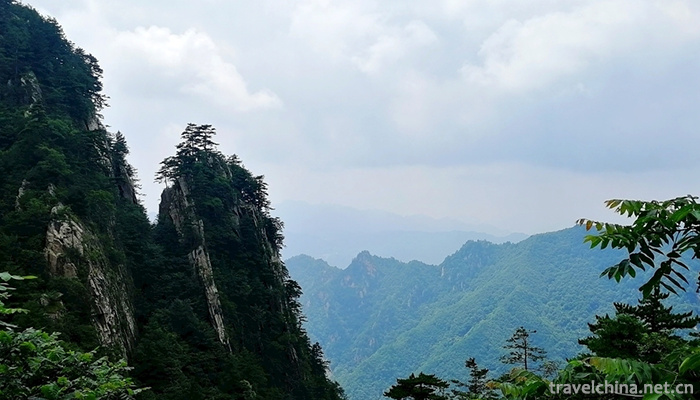
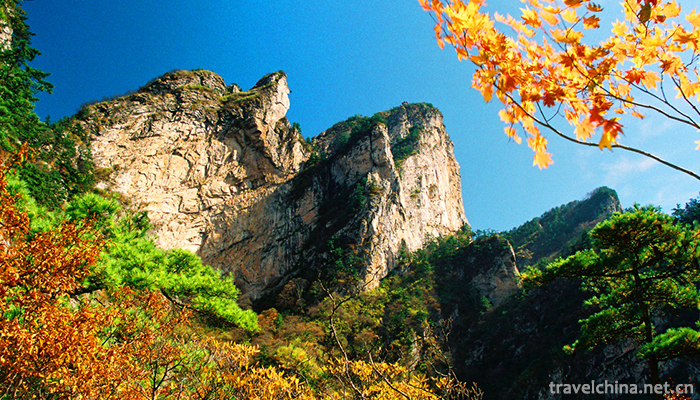
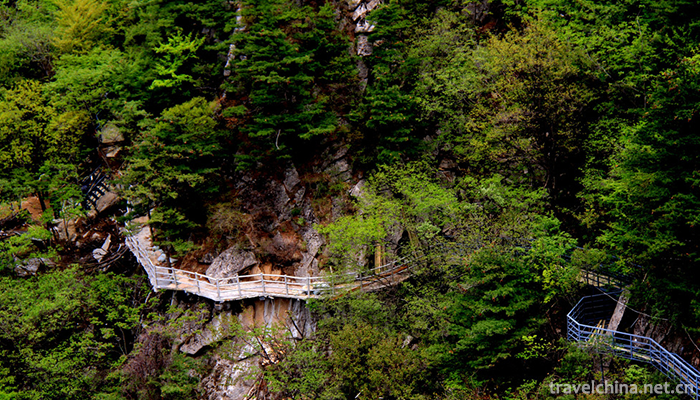
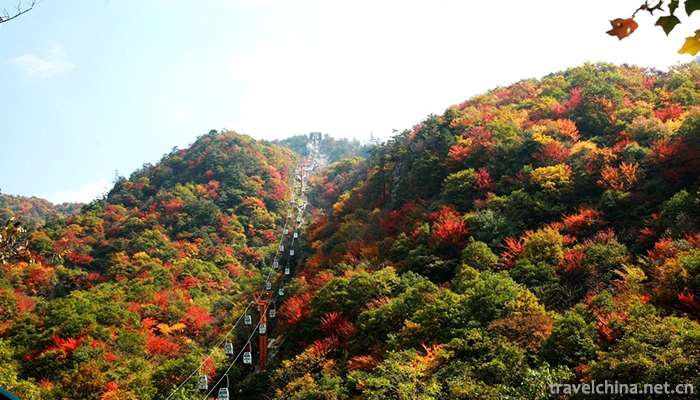
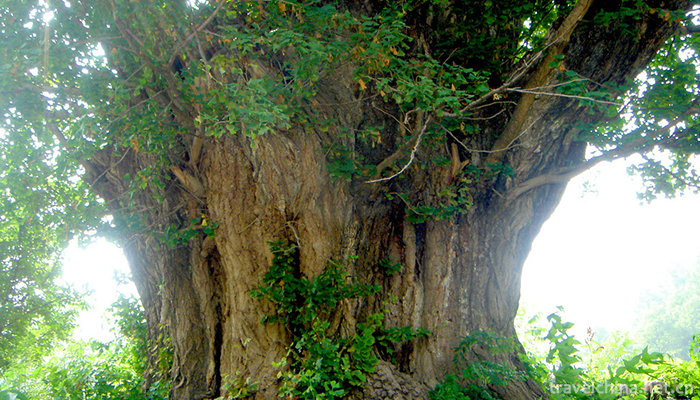
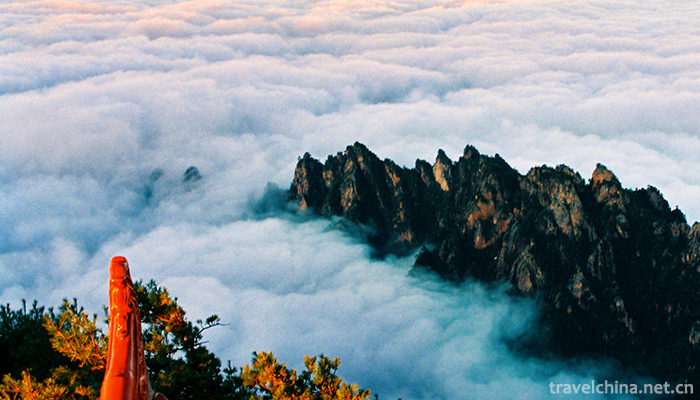
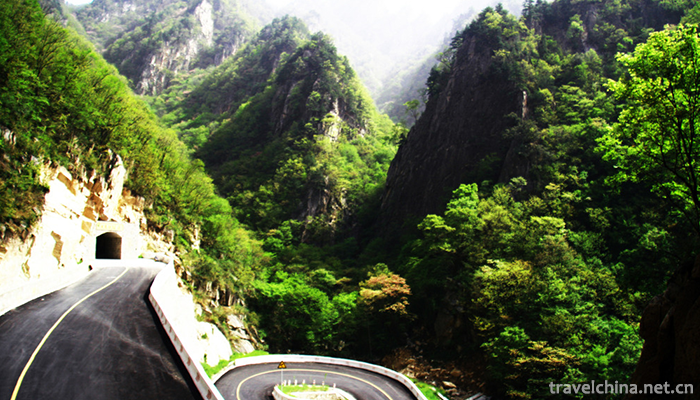
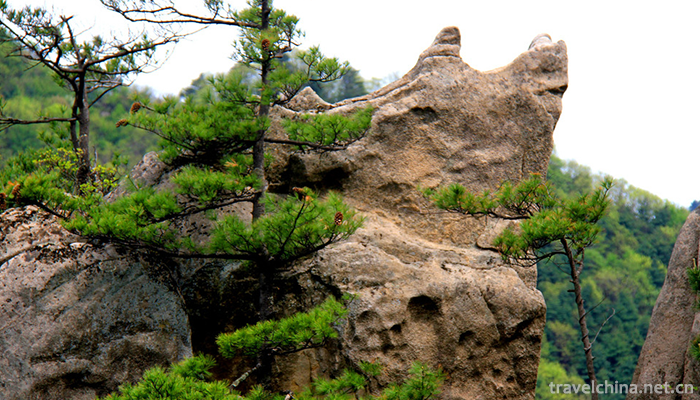
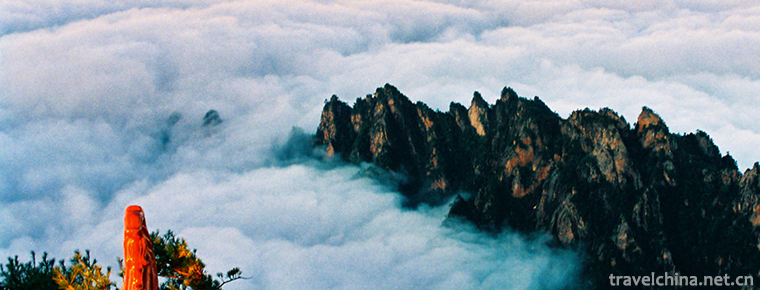
Old boundary ridge of Funiu Mountain
-
Changbai Mountains
Changbai Mountains are the birthplace of the Yalu River, Songhua River and Tumen river. It is the birthplace of Chinese Manchu and the sacred mountain of Manchu culture
Views: 238 Time 2018-10-30 -
Ceramic Firing Techniques of Dengfeng Kiln
Dengfeng kiln ceramics firing technology is a National Intangible Cultural Heritage Representative project. Historical records began in the Tang Dynasty and flourished in the Song Dynasty.
Views: 172 Time 2019-04-26 -
Hui Heavy Knife Wushu
Heavy knife is the original name of big knife. It is a traditional weapon around Beijing and Tianjin. It has a history of thousands of years in China. The original name of Jinmen
Views: 194 Time 2019-05-04 -
Brocade song
Brocade song, formerly known as Gezi or Shijin song, is also called begging tune. It was named Jinge in 1953. This is a form of singing accompanied by instrumental music.
Views: 348 Time 2019-05-07 -
Qingxu Caimen Building
Qingxu Caimen Tower is a local traditional handicraft in Qingxu County, Shanxi Province. Xu Caimen Tower in Qing Dynasty is said to have originated in Tang Dynasty. During the festival, people gathere
Views: 164 Time 2019-06-11 -
Achi Wood Scraping of Lisu Nationality
"Aqimuguo" is a kind of self-entertaining dance for the masses, which is spread in the upper reaches of the Cangjiang River with Yezhi Township as the center. Its characteristics are that it
Views: 323 Time 2019-06-17 -
Violin Opera
Violin opera, originally a flower-drum opera in Yueyang, Hunan Province, spread to Chongyang, Tongcheng and other places around the end of the Qing Dynasty and renamed "Violin Opera", is a u
Views: 190 Time 2019-06-19 -
The Yi Nationality Plays Songs
The dance of the Yi nationality is colorful and varied. It is typical of the simple collective dance "Da Song" (also known as "Ta Song") with the entertainment of the masses. In Mi
Views: 134 Time 2019-07-12 -
Bai Juyi
Bai Juyi (772 - to - 6), Le Tian, the number of Xiangshan residence, and Mr. drunken Yin, whose ancestral home is Taiyuan, Shanxi. And moved to his great grandfather. Lower jaw Born in Henan Xinzheng
Views: 306 Time 2019-09-06 -
Jiushi Scenic Area
Jiushi scenic area is located in Anning Township, Longmatan District, 8 km away from Luzhou city. It is named after the nine peaks in the scenic area, which are shaped like lions.
Views: 180 Time 2020-10-15 -
Concept of Cheongsam
Whether "Qipao" refers specifically to the Qipao in the Republic of China or includes the "Qiren's Robe" or "Qinu's Robe" in the Qing Dynasty. The definition of the concept of Qipao is as controversial as the origin style of Qipao.
Views: 332 Time 2020-12-11 -
Needlework of Chinese embroidery
Category: random needling, straight needling, disc needling, trowel needling, grabbing needling, flat needling, scattered wrong needling, weaving embroidery, applying needling, auxiliary needling, variant embroidery
Views: 151 Time 2020-12-12
